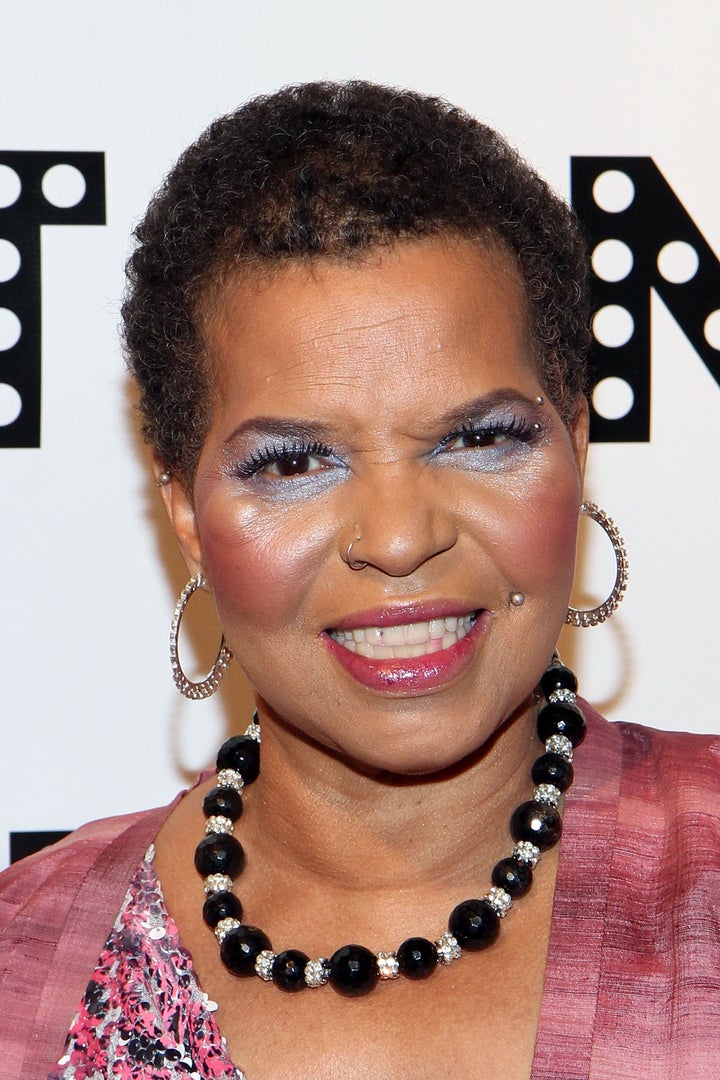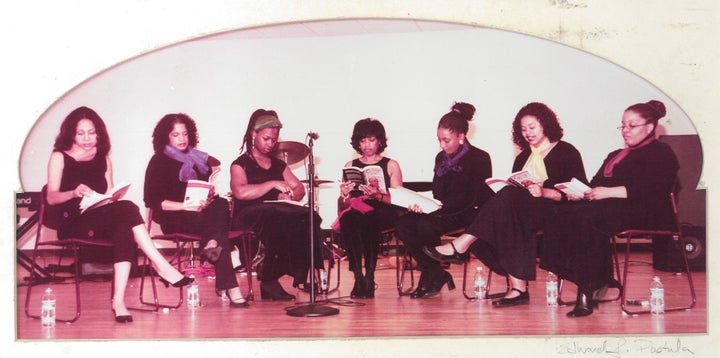
I became acquainted with Ntozake Shange’s work nearly 20 years ago, thanks to my mentor DeNeen Brown. She organized a group of black women staff writers at The Washington Post to do a live reading of Shange’s canonic play “For Colored Girls Who Have Considered Suicide When the Rainbow Was Enuf” at a local library. I was an intern and the youngest of the group, so I was well-cast as the ingenue Lady in Yellow.
Shange’s innovative “choreopoem” about love, resilience, joy, pain, dance and song bound us women writers together in a sisterhood that served as a shield and balm at our powerful and sometimes toxic workplace for years after. I was thrilled at the chance to interview Shange last month, on the eve of her 70th birthday, as she was poised to accept a lifetime literary achievement award from the Hurston/Wright Foundation.
She was completely gracious, but the accumulation of lifetime of health challenges — a series of strokes, mental illness, addiction ― was wearing her down. She juggled 10 public appearances in 15 days and did not end up attending the award ceremony because she was feeling unwell.
A few days later, we learned Shange had passed on.
I am still savoring the last bits of wisdom she shared with me during our conversation. She was celebrating her eighth decade in the most colored girl way possible — with radical self-care. “I got new braids in my hair, I got my nose pierced and I got my nails done,” she told me.
“I am still savoring the last bits of wisdom she shared with me during our conversation.”
We commiserated about the trauma of witnessing the recent Supreme Court confirmation hearings, and then-nominee Brett Kavanaugh’s grotesque display of white male privilege. “I thought he was a bastard,” she said. “I thought he was a danger to women.”
She shared a Me Too story of her own, from 1972. She was pursuing a Ph.D. in American Studies and her adviser — whose name she spelled out, and who is apparently still living — made a sexual overture. So she dropped out. “I never went back to class,” she said. “I dropped out of the whole program. There was nothing called ‘sexual harassment.’ There was no such thing as ‘date rape.’ Those terms weren’t around yet.”
When I asked what was most misunderstood about her work, she spoke to the gender wars stoked by ”For Colored Girls’” unflinching depictions of the interior lives of black women. Some black readers viewed frank portrayals of domestic violence and abuse as a betrayal, as airing a beleaguered community’s dirty laundry for all the world to see.
“They always misunderstood that the reality of black women’s lives was an attack on black men,” she said. But as the Me Too moment continues to reveal, it is not the black community’s dirty laundry, but the entire world’s, that needs to be aired in order for us all to breathe.

Shange wrote about black women, who bear more social burdens and do more than a fair share of the emotional and political labor in this country. That it remains controversial to center their voices and their struggles all these years later remains astonishing to me.
But telling painful truths is part of the work. “That is the role of artists, to see what is happening now, in order to see a future,” Shange told me. “Our immediate reality is so complex that it is hard for us to see a future. But that is what our obligation is.”
I attended Shange’s memorial service at a D.C. church on Monday. The invitation instructed us to arrive in bright colors. The pews were filled with ladies in yellow, red, orange, green, blue, purple, brown, pink — characters from ”For Colored Girls.” And there was a rainbow of men and women wearing tignon, kente and African ankara, kuba and batik prints. Twenty-two speakers paid tribute to Shange, including her daughter, the anthropologist Savannah Shange, who, in an especially touching remembrance, described fixing footnotes to her first book while grieving the loss of her mother.
The ageless choreographer Dianne McIntyre, Shange’s former teacher, performed a quiet homage, her elegant hands twirling and her lean body bending, bobbing and bowing in salute to a blown-up black and white photograph of Shange. A squad — black theater luminaries like Shange’s sister, the playwright Ifa Bayeza, and dramatists Thulani Davis and Renee Charlow, surrounded her with joy and laughter, and made sure her journey to the ancestors was paved in song. A dance party broke out down the aisles to Hector Lavoe’s “Aguanile.”
It was poignant and perfect in every way. Scholar and activist Alexis Pauline Gumbs closed the service by leading us in breathing and in chanting Shange’s words, she said, so that “it never ends.” “We know what happened, and we know what to do,” Gumbs said, smiling. The space Shange cleared for all of us to live out loud is forever. And there is still so much more to be done.
As Shange wrote, “I write for young girls of color, for girls who don’t even exist yet, so that there is something there for them when they arrive.”
Natalie Hopkinson is the author most recently of “A Mouth is Always Muzzled.”
